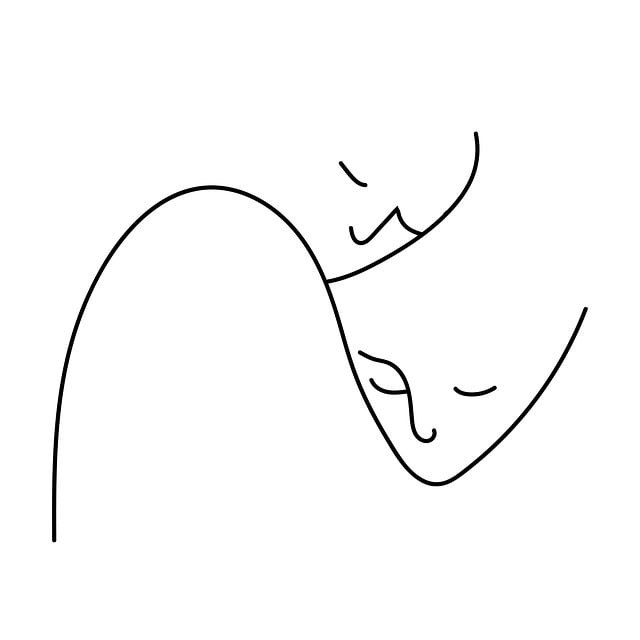Botox for Forehead Lines and Frown Lines is a popular, non-surgical treatment that temporarily paralyzes muscles responsible for dynamic wrinkles, offering a smoother, more youthful appearance. Targeting glabellar lines (vertical furrows between eyebrows) and lateral facial lines (horizontal forehead wrinkles), Botox injections take 15-30 minutes with minimal downtime. Results last 3-6 months, with follow-ups needed for continued smoothing effects. Choosing an experienced healthcare provider minimizes risks like temporary redness or swelling. Ongoing research aims to enhance Botox's efficacy and safety, promising improved techniques and formulations in the future.
Botox is a popular choice for addressing forehead wrinkles and frown lines, offering a non-invasive solution for achieving a youthful appearance. This article delves into the world of Botox treatments, exploring the science behind its effectiveness in smoothing out these common signs of aging. From understanding the various types of forehead lines to examining the procedure’s safety and potential risks, we guide you through every step, focusing on how Botox can transform your facial aesthetics.
Understanding Forehead Lines and Frown Lines: Types and Causes

Forehead lines and frown lines, often interconnected, are a common concern for many individuals as they age. These wrinkles can range from subtle furrows to deep creases, forming either horizontally or vertically across the forehead and between the eyebrows (frown lines). Understanding their types and causes is essential when considering Botox for Forehead Lines and Frown Lines.
Horizontal forehead lines, also known as glabellar lines, are typically caused by muscle contractions, especially during frowning or squinting. Over time, these repeated movements lead to dynamic wrinkles that can become more pronounced. Frown lines, on the other hand, often result from a combination of factors including aging, sun exposure, smoking, and facial expressions. They are vertical wrinkles that stretch from one eyebrow to the other and can be deeply etched, even in younger individuals.
The Role of Botox in Treating Wrinkles

Botox has emerged as a popular and effective non-surgical treatment for wrinkles, particularly targeting those on the forehead and frown lines between the eyebrows. It works by temporarily paralyzing the muscles responsible for causing these unwanted lines, resulting in a smoother, more youthful appearance. When injected by a qualified medical professional, Botox can significantly reduce the depth and visibility of both horizontal and vertical forehead wrinkles, as well as the deep creases that form when we frown or express anger or worry.
This cosmetic procedure offers several advantages over surgical options. It is minimally invasive, with little to no downtime, and provides results that can last for several months. Moreover, Botox is versatile; it can also be used to prevent wrinkles from forming by relaxing muscles before the skin shows signs of aging. For many individuals seeking a subtle yet effective solution for their forehead lines, Botox for forehead lines and frown lines represents a safe and appealing choice.
How Botox Works for Forehead Aesthetics

Botox is a highly effective treatment for reducing the appearance of forehead lines and frown lines. It works by temporarily paralyzing the muscles responsible for causing these wrinkles. The most common areas treated include the glabellar lines (the vertical furrows between the eyebrows) and the lateral facial lines (the horizontal wrinkles across the forehead).
When injected into these specific muscle groups, Botox blocks the nerve signals that cause the muscles to contract, thereby smoothing out the skin’s surface. This non-invasive procedure offers a quick and relatively painless way to achieve a more youthful and aesthetically pleasing look without the need for surgery or extensive recovery periods.
The Procedure: What to Expect During a Botox Session

When it comes to Botox for forehead lines and frown lines, understanding what to expect during a session is crucial. The procedure typically involves a quick consultation with a dermatologist or qualified healthcare provider who will assess your specific needs and areas of concern. During the actual session, small injections are made into the targeted muscles using a fine needle. This treatment works by temporarily paralyzing the muscles responsible for causing wrinkles, thus reducing their visibility.
In most cases, the entire procedure takes around 15 to 30 minutes. You may experience some mild discomfort or bruising afterwards, but these side effects usually subside within a few days. It’s important to remember that the results of Botox are not immediate; it can take up to a week for the full effect to kick in. Additionally, the effects of Botox typically last between 3 to 6 months, after which a touch-up session may be needed to maintain the desired results.
Benefits and Potential Risks: Safety Considerations

Botox has emerged as a popular non-surgical treatment for reducing forehead lines and frown lines, offering several significant benefits. One of its key advantages is safety. When administered by a qualified healthcare provider, Botox is considered safe and effective. It relaxes specific muscles that contribute to the formation of wrinkles, leading to a smoother, more youthful appearance. This minimally invasive procedure involves a simple injection process with minimal downtime, making it an attractive option for those seeking to address early signs of aging without surgery.
However, like any medical treatment, Botox also carries potential risks. Side effects may include temporary redness, swelling, or discomfort at the injection site. In rare cases, patients might experience more serious complications such as headache, blurred vision, or muscle weakness. It’s crucial to choose a reputable healthcare provider with extensive experience in administering Botox to minimize these risks. Regular follow-ups can also help manage treatments and address any concerns promptly.
Results, Maintenance, and Future Prospects

The results of Botox treatment for forehead lines and frown lines are typically visible within a few days to a week, with optimal effects achieved after about 2 weeks. This non-invasive procedure smooths out dynamic wrinkles caused by facial expressions, offering a more youthful appearance. The effects of Botox are not permanent; they usually last between 3 to 6 months, after which maintenance treatments may be required to maintain the desired results.
Looking ahead, future prospects for Botox in cosmetic medicine are promising. Ongoing research continues to refine the treatment techniques and improve the formula, aiming to enhance efficacy and reduce potential side effects. As technology advances, we can expect even more sophisticated methods of delivering Botox, potentially making treatments safer, quicker, and more accessible to a broader range of individuals seeking to combat forehead wrinkles and frown lines.
